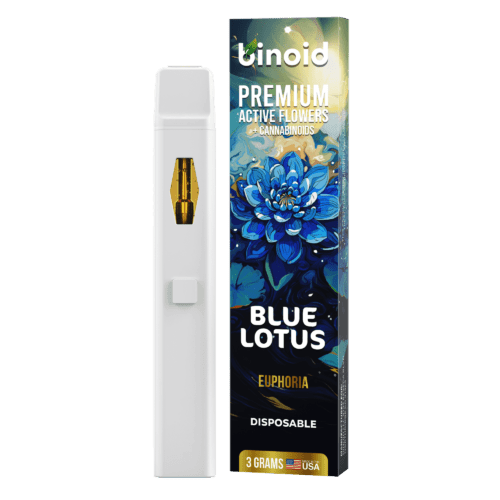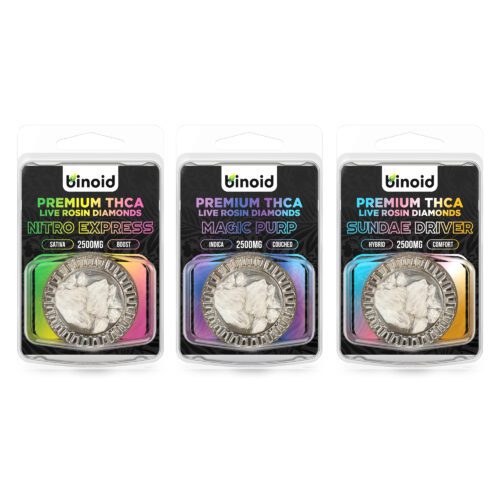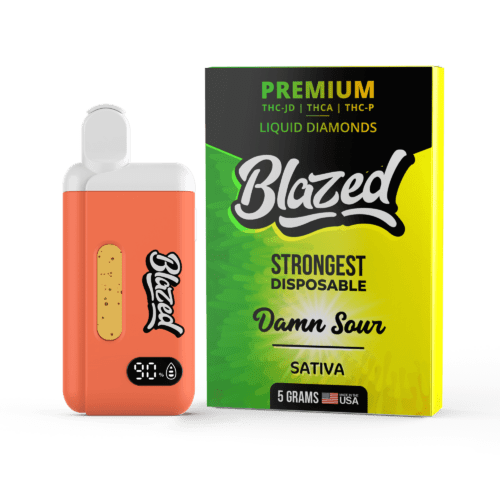
Where Does Blue Lotus Flower Grow?
The blue lotus (Nymphaea caerulea), also known as the Egyptian blue water lily or sacred blue lily, has historically been used for its mild psychoactive effects in some cultural rituals and ceremonies. However, even with such a rich history and effects, some people just aren’t’ sure of where it grows and how it exactly grows. So, we will be answering those ‘growing’ questions today.
The blue lotus water-borne plant typically grows in warm, still, and shallow waters. Its natural habitat includes regions with a temperate or warmer climate, and it originally comes from regions like East Africa and Southeast Asia, including along the Nile River and in other parts of the Mediterranean.
Because of its aesthetic and cultural significance, it’s also grown worldwide in appropriate aquatic settings, such as ponds, water gardens, and botanical gardens with controlled water temperature and conditions to mimic its natural habitat. The plant requires plenty of sunlight and a nutrient-rich growing medium.
To Buy Blue Lotus Flowers Vape Click Here
-
Product on sale
 Blue Lotus Disposable Vape – 3 Gram$37.99
Blue Lotus Disposable Vape – 3 Gram$37.99$69.99
Understanding the Blue Lotus Flower Growing Process
Here’s a basic overview of its growth requirements and process:
- Habitat: Blue lotus flowers require a warm, sunny environment and are often found in ponds, slow-moving streams, and the edges of lakes. They prefer quiet water and can live in water depths ranging from a few inches to several feet.
- Planting: These plants are usually propagated through tubers or seeds. Tubers are the most common method and are planted in the soil at the bottom of a body of water. Initially, place the tuber in shallow water (around 4 inches deep). As the plant grows and sends up shoots, you can gradually increase the water depth. If using seeds, they are submerged into the water until they germinate and then later anchored to the bottom once they’ve grown sufficiently.
- Water Conditions: Blue lotus needs clean water with a low current. They are sensitive to polluted water, which can inhibit their growth or even kill the plants. The pH level of the water should ideally be between 6.5 and 7.5.
- Soil Conditions: They require rich, loamy soil that is nutrient-dense. The soil should be well-aerated and loose to allow the roots to expand and draw the necessary nutrients.
- Sunlight: These plants need full sunlight for optimum growth. They flourish in locations where they can receive 6-8 hours of direct sunlight daily. In areas with hotter climates, partial afternoon shade can help protect the plant from excessive heat.
- Temperature: Blue lotus thrives in temperatures between 70 and 80 degrees Fahrenheit (21–27 degrees Celsius). They are not frost-resistant and can be damaged or killed by cold weather. In regions where temperatures drop in the winter, the plant or tuber often needs to be moved indoors or to a greenhouse.
- Growth and Blooming: The plants send up shoots and leaf pads that float on the water’s surface, with flowers on long stalks that may appear above or at the water level. The blooming period for blue lotus is during the warmer months, and the flowers usually open in the morning and close in the late afternoon.
- Pruning and Care: Regular removal of dead leaves and blue lotus flowers will help the plant maintain its health and vigor. It’s also vital to monitor for any pests or diseases, as these can occasionally affect water lilies.
- Pests: Aphids and caterpillars might occasionally be a problem. They can be removed by hand or with a gentle water spray.
- Algae: Excessive nutrients or sunlight can lead to algae growth. Reduce feeding and/or increase the shading if necessary. Some aquatic plants can also help reduce algae by competing for nutrients.
- Winter Care: In colder climates where ponds might freeze, it’s best to move the tuber to a shallower part of the pond or even indoors in a container with water to overwinter.
How is Blue Lotus Harvested?
If you’re interested in harvesting the blue lotus flowers or leaves for personal use, ensure you’re doing so sustainably and in a manner that doesn’t harm the plant. Only harvest a few leaves or flowers at a time, allowing the plant to continue growing healthily.
-
Product on sale
 Super 7 Gummies – 7000MG$39.97
Super 7 Gummies – 7000MG$39.97$59.99
Here’s how the process is generally conducted:
- Identification of Maturity: First, it is imperative to identify the right stage of the flowers before harvesting. Blue lotus flowers that are just at or slightly past full bloom are ideal for harvesting. They are usually at their highest level of potency (for their alkaloids and flavonoids) during this period.
- Hand-Harvesting: Because of the delicate nature of the flowers, blue lotus is typically harvested by hand. Harvesters wade into the water or use boats if the water is too deep, and pick the flowers gently, being careful not to damage the petals or the bulb. The stem is typically cut a few inches below the flower so that it can continue to produce more flowers throughout the season.
- Seed Pod Consideration: If the intention is to harvest not only the blue lotus flowers but also the seed pods, the plant is often allowed to mature until the seed pods are fully developed. This is crucial for replanting purposes and maintaining the sustainability of the harvesting practice.
- Harvesting the Rhizomes: In some cases, especially when the goal is to propagate new plants, the rhizomes of the plant are also harvested. This is done usually before the growing season begins or after the flowering period is over. Harvesters must be careful when extracting rhizomes from the water bed to ensure they don’t damage them, as this could affect their growth.
- Drying Process: If the blue lotus flowers are to be used for various products, they are often dried after harvesting. This involves spreading the flowers out in a single layer in a dry, warm, and dark place with good air circulation to preserve their color and active compounds. This process can take several days.
- Sustainable Practices: Sustainable harvesting practices are crucial to ensuring that the Blue Lotus population remains robust. This means not over-harvesting and ensuring that enough plants are left to repopulate naturally. For this, sometimes only parts of the flowers or leaves are harvested from each plant.
Note: The specific methods can vary depending on the region, the water body’s size and depth where the lotuses grow, and the local traditional practices.
Final Blue Lotus Flower Growing Thoughts
Over the years, the cultivation of blue lotus has extended beyond its natural locales due to its historical and spiritual significance, particularly in ancient Egyptian culture, as well as its use in traditional medicine, herbal remedies, and even for its psychoactive properties.
However, it’s important to note that in some countries, there may be regulations regarding the cultivation, use, or distribution of blue lotus because of these properties. And remember, the exact care, along with certain conditions, can vary based on specific location and climate.
To Buy Blue Lotus Flowers Vape Click Here
-
Product on sale
 THCA Diamonds 2500mg – Bundle$102.99
THCA Diamonds 2500mg – Bundle$102.99$169.99



